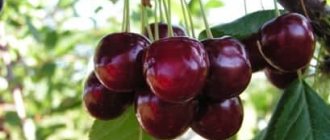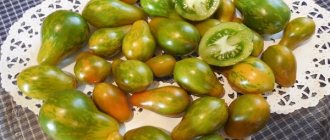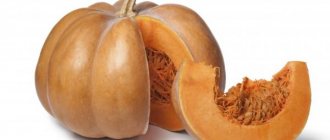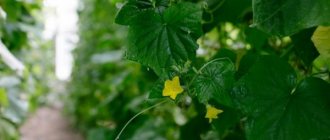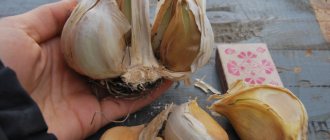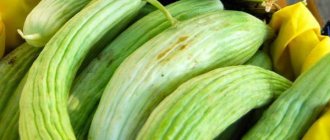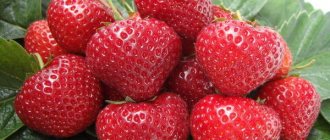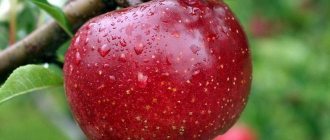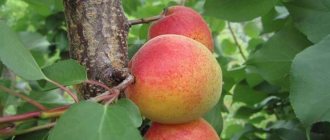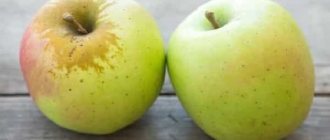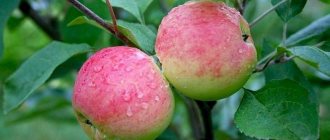- November 26, 2018
- garden plants
- Lyudmila Selivanova
The crops grown in gardens are distinguished by their diversity. Along with cherries, plums, apple trees and other fruit trees, you can find various varieties of apricot in gardens. The apricot variety Snegirek has recently gained particular popularity among those grown in central Russia and its northern latitudes. This is a heat-loving crop, which is suitable for the climate of the southern latitudes of the Stavropol and Krasnodar Territories, but a striking example of what selection can do is the Snegirek variety, the fruits of which ripen even in cool climates during the summer. This variety will be discussed in more detail in the article.
Description of culture
The Snegirek variety is not included in the State Register of Achievements in Breeding Work, and the specialist who developed this variety is unknown. Thanks to the description of the apricot variety Snegirek, photos and reviews from gardeners, it is possible to get acquainted with this crop and decide whether it is suitable for growing in a particular region or not.
When characterizing trees of this variety, it should be noted that they are very frost-resistant. This is facilitated by the thick bark of this tree variety. The hardy apricot variety Snegirek can withstand temperatures down to -35 °C. That is why gardeners in the Far North and Ural regions so readily cultivate it. Experienced gardeners recommend that owners of northern gardens cover young apricot trees, thereby preventing their bark from freezing.
Snegirek is in the lead!
The undoubted leader among frost-resistant apricot varieties is the Snegirek
", with shelter it can grow far in the north, while its short height (120–150 cm) allows you to collect up to 7–10 kg of excellent dessert fruits with dense pulp and medium sugar content.
All varieties can be easily found in nurseries
, some gardeners obtain these varieties themselves - by grafting or budding onto low-value varieties or seedlings of apricot, sloe or cherry plum - the latter will also add winter hardiness to the apricot.
Main characteristics
In the description of the Snegirek apricot variety, gardeners note that this tree is not a tall one. The maximum height of an adult tree is 1.5 meters. Life expectancy in favorable conditions is approximately 30 years.
The variety is self-pollinating, mid-late. When flowering late, the tree is not susceptible to return spring frosts. Flowers always form ovaries. Apricots on the tree ripen in mid-August. Productivity is 10-15 kg per tree at the beginning of fruiting, which occurs in the fifth year from planting. Fruiting is annual, without interruption.
Reviews and descriptions of the Snegirek apricot variety (photo presented in the article) indicate that the fruits have good elasticity, and this allows you to avoid the risk of damage during transportation. An equally important characteristic is the high keeping quality of the fruit. The peel of the fruit has a creamy pink color and can sometimes taste a little bitter. The pulp of the fruit is juicy and sweet in taste.
Apricot Part 2
Moderators: Vital, Roman S.
- Go to page:
Status: Offline
Apricot Part 2
Message from Andrey Vasiliev » 07/27/2015, 19:54
Status: Offline
Re: Apricot Part 2
Message from LOA » 07/28/2015, 13:01
Messages: 299 Registered: 08/06/2015, 23:16 From: Minsk Thanked: 487 times Thanked: 355 times
Status: Offline
Re: Apricot Part 2
Message from sansad » 08/06/2015, 23:40
Status: Offline
Re: Apricot Part 2
Posted by ingen » 08/08/2015, 15:02
Messages: 189 Registered: 01/31/2013, 17:09 Interests: Gardening Occupation: Gardening From: Moscow region Thanked: 113 times Thanked: 371 times
Status: Offline
Re: Apricot Part 2
Message from Igor Ivanov » 09/03/2015, 23:39
Messages: 465 Registered: 01/23/2014, 18:52 From: Bashkortostan Thanked: 590 times Thanked: 255 times
Status: Offline
Re: Apricot Part 2
Posted by BHAKT » 09/04/2015, 18:11
Messages: 189 Registered: 01/31/2013, 17:09 Interests: Gardening Occupation: Gardening From: Moscow region Thanked: 113 times Thanked: 371 times
Status: Offline
Re: Apricot Part 2
Message from Igor Ivanov » 09.09.2015, 00:05
Messages: 189 Registered: 01/31/2013, 17:09 Interests: Gardening Occupation: Gardening From: Moscow region Thanked: 113 times Thanked: 371 times
Status: Offline
Re: Apricot Part 2
Message from Igor Ivanov » 09/09/2015, 00:46
Messages: 4342 Registered: 02/13/2013, 08:57 Interests: Gardening Occupation: Repairing television equipment From: Central Chernobyl Region, Voronezh Thanked: 2025 times Thanked: 3301 times
Status: Offline
Re: Apricot Part 2
Posted by Zener » 09.09.2015, 10:44
Messages: 306 Registered: 02/08/2014, 10:56 From: Krasnodar region Thanked: 116 times Thanked: 350 times
Status: Offline
Re: Apricot Part 2
Message from newbie » 09.09.2015, 13:24
Hello. The apricot seedlings do not survive for the third year. For the first time, I planted the New Jersey variety, which was attractive according to the descriptions - the seedling did not emerge after wintering (autumn planting). Next autumn, in another nursery, I ask you to select a variety at the discretion of the seller - so that the fruits are tasty, so that fruiting occurs annually. They say, take a pole, and the apricot will bear fruit once every four years. I answer that I have some poles, I want an apricot. Again New Jersey is recommended. I planted it, but it fell out again after wintering. Starting October 1, I’m going to the nursery again, to pick up an apricot seedling, among other things.
Please tell me the varieties of apricots that will bear fruit approximately annually, have good taste, and the cultivation region is the Southern Federal District. Except New Jersey.
Messages: 189 Registered: 01/31/2013, 17:09 Interests: Gardening Occupation: Gardening From: Moscow region Thanked: 113 times Thanked: 371 times
Status: Offline
Re: Apricot Part 2
Message from Igor Ivanov » 09/12/2015, 20:48
Messages: 189 Registered: 01/31/2013, 17:09 Interests: Gardening Occupation: Gardening From: Moscow region Thanked: 113 times Thanked: 371 times
Status: Offline
Re: Apricot Part 2
Message from Igor Ivanov » 09/12/2015, 20:50
newbie wrote: Hello. The apricot seedlings do not survive for the third year. For the first time, I planted the New Jersey variety, which was attractive according to the descriptions - the seedling did not emerge after wintering (autumn planting). Next autumn, in another nursery, I ask you to select a variety at the discretion of the seller - so that the fruits are tasty, so that fruiting occurs annually. They say, take a pole, and the apricot will bear fruit once every four years. I answer that I have some poles, I want an apricot. Again New Jersey is recommended. I planted it, but it fell out again after wintering. Starting October 1, I’m going to the nursery again, to pick up an apricot seedling, among other things.
Please tell me the varieties of apricots that will bear fruit approximately annually, have good taste, and the cultivation region is the Southern Federal District. Except New Jersey.
Application area
The fruits of this variety are small in size, which is a good characteristic for processing. You can make compotes for the winter from whole fruits. Apricots are a pleasure to eat when eaten fresh. Having a dense consistency, they do not spread during heat treatment. They make wonderful jam with whole slices. The fleshiness of the fruit allows you to prepare thick jams. Apricots can be made into candied fruits or dried.
Characteristics and description of the variety
The tree is not tall and barely reaches 2 meters in height and will not take up much space for planting. The crown consists of many branches, which must be thinned out at least once a year. Flowering occurs in May. The variety is partially self-pollinating and can be grown with other representatives of the crop with a similar flowering period.
“Snegirek” begins to bear fruit no earlier than the fifth year of life. Apricots, although small in size, are sweet. Sugar content - 9%. The weight of one berry is 20 grams. The pulp is elastic and is not crushed or damaged when harvesting fruits. The peel is yellow in color with a pink blush. Sometimes the peel can taste bitter. The stone is flat in shape and separates well from the pulp. According to their intended purpose, the fruits can be used for processing, but are good for fresh consumption. Compotes and preserves are made from apricots, jam, fruit wine, and tincture are made.
The yield is 10-15 kilograms of apricots per tree. The peak of apricot harvest occurs in August, even when planted in central Russia. The indicator is considered average, but fruiting occurs annually and without interruption. At the same time, there is no decrease in fruit quality and yield. The average life expectancy with proper care can exceed 30 years.
The variety is recognized as winter-hardy, able to withstand even temperatures down to minus 40 degrees. You can grow an apricot tree in the Moscow region, the Urals, Siberia and the south of the country. Regardless of the local climate, the tree quickly adapts and grows.
The main positive qualities of the variety are:
- High winter hardiness.
- Good taste properties and universal purpose of the fruit.
- Long lifespan.
- Self-fertility.
- High shelf life and good transportability.
- Good, stable yield.
Disadvantages include its weak resistance to disease. It is easily affected by leaf spot and moniliosis. Apricots are often attacked by insects. To prevent the tree from becoming infected with diseases and being attacked by caterpillars, it is treated with antiseptics and insecticides every spring and autumn.
Preparing the soil and planting site
First of all, you need to know what kind of soil the tree likes. For growing apricot Snegirek, the ideal soil is fertile with a slightly alkaline reaction. In the northern regions, clayey and acidic soils are often found. Experts recommend liming with acidic ones. This is done 2-3 weeks before planting the tree so that the limestone is distributed in the soil. On clayey soils, add coarse sand to the digging. For this procedure you need a bucket of sand per square meter of land. To increase soil fertility, gardeners advise adding humus to autumn digging at the rate of 1 bucket per square meter of area.
The place where the apricot seedling will be planted must be protected from the wind. The southern wall of the outbuildings is suitable for this. The distance from buildings and other trees must be at least 2 meters. The depth of the soil is at least 3 meters. The tree does not like drought, but waterlogging does not do it any good. This may be one of the reasons why apricots do not bear fruit.
Growing and care
The planting time may be mid-October or in the spring, immediately after the snow has melted. Autumn planting is more suitable for regions with warm and temperate climates; in other areas it is better to start growing a tree in the spring. Seedlings are bought at a fair or at a garden nursery. You should pay attention to the age of the seedling; preference is given to one-year-old trees.
Apricot crops should be grown in a sunny place, protected from the wind. The distance from other fruit crops and shrubs should be at least 2 meters. The soil should be loamy with the addition of sand, pH neutral. If the soil is acidified, then limestone is placed in it and given 2-3 weeks for it to distribute in the soil. Only then do they begin planting. To increase soil fertility, you can add a bucket of humus per square meter to the ground.
The planting hole is dug at least 50 centimeters deep. The bottom layer of earth is separated in advance when digging it up, and it is poured back into the hole. Add 200 grams of ground ash and a tablespoon of superphosphate to the soil in the pit. All ingredients are thoroughly mixed until the soil is homogeneous and a slide is formed from the nutrient mixture. A seedling is placed in the center of the hill without deepening the root collar. They bury it with earth. A peg is driven in next to the tree and the seedling is tied to it for the first time.
Selection of seedlings and planting
A young tree is planted either in early spring or autumn. Experts give greater preference to autumn tree planting. The pit for planting the seedling is prepared in advance, about three weeks in advance, so that the soil in the pit settles. The depth should be 80 cm, and the diameter should be 50 cm. Drainage is poured onto the bottom. It can be crushed stone, expanded clay, gravel. The excavated soil is mixed with wood ash and poured into the hole. On top is a layer of soil without fertilizers.
When buying an apricot seedling Snegirek (photo presented in the article), you should pay attention to the roots. They must be undamaged. The best option is to buy it in a specialized store, and it should be taken into account that the seedling takes root best before 2 years of age. Before planting, its roots are dipped in a mash of black soil or manure.
Planting is carried out as follows: in the center of the hole, fertile soil is poured into a cone, a seedling is placed on it and its roots are spread along this cone. Carefully, without touching the roots, you should drive in a peg to which the tree will be tied. A bucket of warm water is poured into the hole. When the water is absorbed, the hole is covered with earth. The grafting height should be 3-5 cm above ground level. The soil is compacted. The tree is tied to a peg for stability.
Buy Apricot seedlings Snegirek
Then in the fall, moisture-recharging irrigation is carried out. Cart 0 rub. Fruit and berry crops. Fruit trees. The plant is not self-fertile!
In order for the plant to be pollinated, other pollinating plants should be planted next to it. Payment You can pay in cash, by bank card, at Sberbank, through a payment terminal, or by electronic money.
Look at varieties similar to Apricot Snegirek
12 month guarantee when ordering a boarding service, the service is available on the ordering page. Size Price 2 years 1 rub. Product added to deferred To ensure that your deferred products do not disappear anywhere, we recommend registering on our website. About Snegirek apricot seedlings on the semiramisgardens website. The height of these trees is no more than m. The crown of large-sized Snegirek apricots is dense and spreading.
Apricot is considered a southern crop that loves high humidity and a warm climate. Nevertheless, there are varieties of trees that grow quietly and bear fruit even in the northern regions. Possessing high frost resistance, apricots have time to ripen during the summer even in cold summers. The tree is not tall and barely reaches 2 meters in height and will not take up much space for planting.
The plant bears fruit annually. Productivity is high. The first ripe fruits are picked in mid-August.
Gardeners are increasingly occupying planting areas with Snegirek apricots. The variety is frost-resistant. It is especially loved by owners of small summer cottages: the tree rarely grows more than 2 m.
The size of the fruits is small, but this deficiency is more than compensated for by their taste.
Cultivation care
After planting a tree with insufficient humidity, it is necessary to water at least once every two weeks. If the weather is rainy, watering is not done. If we are talking about moisturizing an adult tree, it is carried out at the beginning of flowering, in May, when shoots are actively growing and before ripening. The last watering is done before preparing for winter.
Fertilizing is carried out from the second year after planting. In the spring it is ammonium nitrate, and in June-July the tree is fertilized with superphosphate and potassium fertilizer.
Reviews and descriptions of the apricot variety Snegirek (photo below) tell how to properly form the crown of a tree.
Proper pruning is an important condition for obtaining an apricot harvest when the tree enters the fruiting period. Crown formation begins in the second year.
Features of growing apricot
It is better to plant apricots in spring
, since when planted in the fall they may not have time to properly settle down in the new place, so freezing, albeit weak, is not excluded.
The seedlings are placed by lowering the root system into a hole prepared in advance for its size, to the bottom of which a little broken brick is added for drainage and a cushion of nutritious soil is built. After planting, the soil is trampled down, the plant is watered well and then a free circle is mulched with peat or humus.
Plant apricots in the sunniest place
or a south-facing slope.
Having outlined the area, we prepare the soil - we dig it up with a shovel full, add organic matter - 5-6 kg per meter, a couple of tens of grams of complex mineral water with a predominance of potassium salt and superphosphate
. If the soils of your site are too compacted with the presence of clay, then it won’t hurt to add river sand mixed with ash.
Source: sad6sotok.ru
Warming apricots for the winter
Trees that grow in the northern regions are recommended to be covered for the winter for the first two or three years, even if it is the Snegirek apricot variety shown in the photo below, the description of which states that it is a frost-resistant variety. While its bark is young, it is susceptible to freezing.
The shelter is made as follows: the branches are leaned against the trunk and tied with a rope, without tightening, and a canvas bag is put on top. The area around the tree trunk is covered with straw or spruce branches. In spring the bag is removed. Alternatively, you can wrap the trunk with agrospan, attach it to stakes and sprinkle soil underneath.
Self-fertile Bullfinch
The unofficial leader among winter-hardy varieties, the Snegirek apricot is able to live on any soil. The short tree blooms late, so it is not afraid of return frosts. Other advantages of the variety are that:
- juicy fruits have elastic pulp, thanks to which they are highly transportable;
- yellow and red apricots are very sweet and can be stored all autumn;
- apricot is self-fertile.
Among the disadvantages, it is worth noting that in rainy summers Snegirek is susceptible to moniliosis and leaf spot.
Diseases and pests
Reviews and descriptions of the apricot variety Snegirek (there is a photo in the article) note the tree’s weak immunity to diseases such as moniliosis, cytosporosis, fusarium, rot, and leaf curl. To prevent pathologies from affecting the bark, foliage and fruits, it is necessary to carry out proactive treatments with copper-containing preparations. Particular attention should be paid to treatments after rainy weather.
How to prevent diseases from appearing on a tree? The fungal pathology moniliosis appears on the tree after a sharp drop in temperature. Fungi multiply dramatically, turning flowers, leaves, twigs into something similar to a burn. To prevent this from happening, you need to treat it with Bordeaux mixture or Horus in early spring after flowering. If the fungus does infect the tree, you need to remove the infected branches and fruits. Be sure to whiten the wood with a mixture of copper sulfate.
If it is noticed that the tops of the shoots have begun to turn brown, the leaves have withered, and spots have appeared on the bark of the tree, these are signs of cytosporosis. First, you need to anoint all wounds with garden varnish, and the next step is to treat them with the antifungal drug “Hom”.
To prevent ticks and sawflies from parasitizing the tree, you need to remove and burn the weeds. Spraying with insecticides gives good results.
If the tree is not deprived of regular watering, fertilizing and protection from unfavorable environmental conditions and pests, it will definitely appreciate taking care of itself and bring an excellent harvest.
Mid-season apricot varieties
Most often, mid-ripening apricots are grown in dachas; this is even a bit of a tradition. Among them are the following varieties: Krasnoshchekiy, Zaporozhets, Goldrich, Altair, Aviator, Burevestnik, Olympus, Phelps, Polessky large-fruited, Aquarius, Yaltinets, Monastyrsky, Amursky, Molodezhny, Shalamark and others.
Apricot variety Red-cheeked
A medium tree and a spreading crown can show excellent results - fruits weighing up to 35 g. The fruits are bright orange, with reddish sides, slightly flattened and oval-like. The taste of the fruit is sweet with some sourness. Red-cheeked is a self-fertile variety, and therefore very popular among summer residents. In addition, the plant shows high productivity, unpretentiousness, and average neutrality to diseases, drought and frost.
An unpretentious tree can live in almost any conditions, but only if diseases are prevented, which requires preventive measures.
Apricot variety Yaltinets
A unique tree with original fruits, strong growth and a spreading crown. The fruits are really large, up to 60-65 g, ovoid, flattened on the sides, most often orange, but they are also bright yellow with a specific shade. Speaking of taste, you can notice a serious difference from many varieties, because the taste is sweet and pronounced.
Yalta fruits have excellent canning and table qualities, and therefore can be safely used fresh or prepared.
The plant is characterized by consistently high yields, resistance to drought and frost, and good resistance to many orchard diseases.
Apricot variety Pineapple
A medium-sized tree with a rounded crown, which is not distinguished by abundant greenery. The variety is considered quite productive, sometimes up to 150 kg of fruit from one tree. The fruits of the Pineapple Apricot are large or medium-sized, weighing about 40-50 g, orange in color and compressed on both sides. The pulp is medium density, excellent taste and aroma.
Pineapple apricot is self-fertile, highly frost-resistant, but susceptible to some garden diseases.
This variety is considered unpretentious, but requires special attention in mass plantings. It is not advisable to shade it with larger trees; timely pruning is required.
